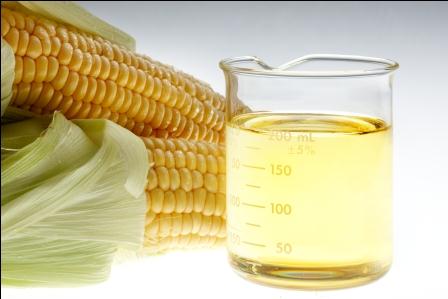How to Tell if Ethanol is Destroying my Vehicle
Here's a fact: Most gasoline that you're pumping into your vehicle these days contains some sort of ethanol concentration, typically 10 to 15...
3 min read
Bell Performance : Apr 2 2013

Bell Performance's on-staff master mechanic James Dunst returns today to talk about what's different about flex fuel cars, why they can burn 85% ethanol, and why you can't just put E85 or E15 into any vehicle you want.
 Some countries like Brazil have been running most of their cars and trucks on high concentrations of ethanol (approaching 85%) for decades.
Some countries like Brazil have been running most of their cars and trucks on high concentrations of ethanol (approaching 85%) for decades.
Ethanol supporters point to this fact as if to imply that the people out there decrying how bad ethanol is are misinformed at best, or dishonest at worst.
The average consumers sees this argument, and without some key pieces of information, they might really believe that they could take their current 2008 Honda Accord to Rio and tool around town on Brazilian E85.
Here's why there are differences in the cars sold in Brazil and most of the cars you can get here in the states.
Any time you see or hear about E85, it's almost always in conjunction with discussion about a "flex fuel" vehicle. These are vehicles that have had specific mechanical changes to them, whether when they were being built from new or if the owner had an aftermarket conversion done on them. A flexible fuel conversion will allow a vehicle to run on any ethanol blend up to 85% ethanol (but not 100% ethanol). This fuel blend is referred to as E85, which is 85% ethanol and 15% gasoline.
Most vehicles built recently have a reduced chance of having ethanol-related problems with respect to their fuel systems and the materials they're made of. Older vehicles that used steel in the fuel systems or cork gaskets may have issues from long term exposure to ethanol and water. If you bought a 2013 Ford Explorer, you're not likely to have these fuel system problems with ethanol.
The key here is that older cars have to have material changes to their fuel systems to avoid the inevitable damage they would have if they wanted to run on E85. Remember that 85% ethanol is going to have 5-8 times the damaging effect on materials that the available E10 or E15 fuel is going to have.
Talk about changing fuel system materials, while important, doesn't resonate with a driver who might be following some bad advice to use E85 in their regular car. That's because fuel system damage happens over time and exposure to the fuel, and isn't noticeable when you're actually driving the car (that is, until the damage is advanced enough). But E85 burns differently than E10 or regular gasoline, and that means a flex fuel conversion has to involve changing the way the injectors work.
Ethanol has 25% less energy than gasoline, meaning more ethanol is needed in the combustion chamber to produce the same energy output as a gasoline only engine. To account for this, flex fuel vehicles have a wider range of injector pulse width allowing up to 40% more liquid fuel into the fuel air mixture. Injector pulse width is the time a fuel injector is held open allowing fuel to flow through it. On the other hand, older vehicles with a carburetor must have larger jets to allow more fuel flow. A jet is a small brass fitting with a hole in the center that meters the fuel into the engine. A vehicle using ethanol blended fuel must have a larger hole in the jet. Without these essentia conversion, the fuel-air mixture is going to be "lean" (too much air and not enough fuel in the mix), which burns hotter than the normal fuel-air mixture, and that's going to make your engine run rough and experience critical damage over time.'
This is why you can't just slap E85 into a regular car and not have problems. But you can do a flex fuel conversion......
If your vehicle is fuel injected, and is 1995 or newer, you will only need two things in order to convert your engine to flex fuel. You will need an electronic control module that plugs in between the fuel injectors and the factory fuel injector electrical connectors. There are a number of companies that manufacture these units and you can find them for purchase online without too much trouble. The other part needed which is an absolute must is a fuel sensor that detects the ethanol/gasoline ratio. This fuel sensor is connected to the electronic control module you just bought above, and is used by this module to determine how much fuel flow is needed based on how much ethanol is in your fuel. The higher the ethanol content, the higher the fuel flow needs to be.
On older vehicles you may need to change such things as the fuel pump, fuel tank, fuel injectors, steel and rubber fuel lines. These items are the parts susceptible to the corrosive damaging effects of ethanol. Carburetors are made of aluminum and steel and can also be damaged by long term exposure to ethanol-blended fuel. It's also a good idea to use a quality fuel additive that protects these components from the corrosive effects of ethanol.
Finally, since we've mentioned the issue of ethanol damage, it should be noted that Federal law requires the original manufacturer of the vehicle honor all new vehicle factory warranties if an EPA certified conversion system has been installed on a vehicle. It should also be noted that using E85 blended fuel will result in approximately 30% less miles per gallon because of the lower energy value of ethanol. They may be used to that in Brazil, but not here in the United States.
Here's a fact: Most gasoline that you're pumping into your vehicle these days contains some sort of ethanol concentration, typically 10 to 15...
2 min read
The aftermath of the EPA’s decision to approve E15 (15% ethanol) use in 2007 and later vehicles has settled. Industry and trade groups are lining up...

After months of discussion and anticipation, the other shoe has finally dropped. On October 13th, 2010, the EPA issued an approval to start offering...